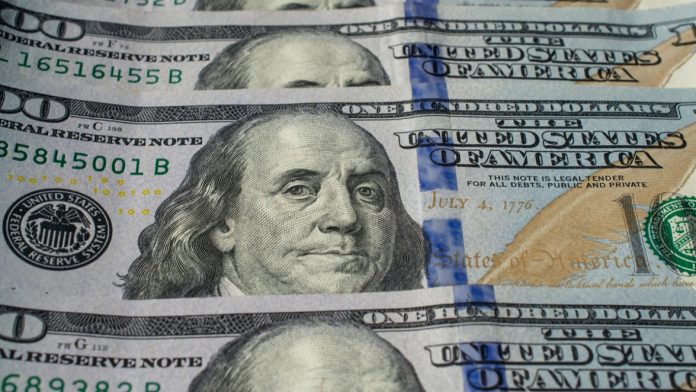Brexit turmoil and a lack of fresh data sent the pound lower versus the dollar at the start of the week. The pound US dollar exchange rate dropped to a low of US$1.2510. This is the lowest level that the pair have traded at in three sessions. The pair is flat in early trade on Tuesday.
| What do these figures mean? |
|---|
| When measuring the value of a pair of currencies, one set equals 1 unit and the other shows the current equivalent. As the market moves, the amount will vary from minute to minute.For example, it could be written:1 GBP = 1.28934 USDHere, £1 is equivalent to approximately $1.29. This specifically measures the pound’s worth against the dollar. If the US dollar amount increases in this pairing, it’s positive for the pound. Or, if you were looking at it the other way around:1 USD = 0.77786 GBPIn this example, $1 is equivalent to approximately £0.78. This measures the US dollar’s worth versus the British pound. If the sterling number gets larger, it’s good news for the dollar. |
The pound was one of the weakest currencies in the previous session as Brexit concerns and a lack of fresh data sent the pound lower. With just under a week to go until the results of the Conservative leadership contest will be announced, Boris Johnson remains the front runner by a solid margin. Boris Johnson has continued with his no deal Brexit rhetoric which has unnerved pound traders leading to fears that a no deal Brexit is more likely come 31st October.
Today investors will look towards UK jobs data. So far, despite Brexit turmoil, firms have continued hiring, preferring to employ more staff than any long-term investment. Analysts expect employment to remain low at 3.8%. Average wages are expected to increase to 3.8% year on year in the three months to May. This would be a strong increase from the previous months 3.5% ad could boost demand for the pound.
| How does strong jobs data boost the currency? |
|---|
| It works like this, when there is low unemployment and high job creation, the demand for workers increases. As demand for workers goes up, wages for those workers also go up. Which means the workers are now taking home more money to spend on cars, houses or in the shops. As a result, demand for goods and services also increase, pushing the prices of the goods and services higher. That’s also known as inflation. When inflation moves higher, central banks are more likely to raise interest rates, which then pushes the worth of the currency higher. |
Will US Retail Sales Drag Dollar Lower?
Demand for the dollar was strong in the previous session following Chinse GDP release. Data showed that economic growth in the world’s second largest economy slowed to 6.2% in the second quarter. This is the slowest rate of growth in 27 years as the US — Sino trade war hit the Chinese economy. Tension between the US and China have caused the economy to slump and concerns are growing that the slowdown could have repercussions across the globe. The dollar moved higher as investors bought into the greenback for its safe have properties.
Today investors will look towards US retail sales data for further clues as to the health of the US economy. Data earlier this month showed that the US labour market was very strong and wage growth remained robust. Investors will now want to see whether this is being reflected at the tills. The Fed are poised to cut interest rates at the July FOMC meeting. A strong retail sales figure is unlikely to convince the Fed to not cut this month. However, it could help support an argument for a one and done cut.
| Why do interest rate cuts drag on a currency’s value? |
|---|
| Interest rates are key to understanding exchange rate movements. Those who have large sums of money to invest want the highest return on their investments. Lower interest rate environments tend to offer lower yields. So, if the interest rate or at least the interest rate expectation of a country is relatively lower compared to another, then foreign investors look to pull their capital out and invest elsewhere. Large corporations and investors sell out of local currency to invest elsewhere. More local currency is available as the demand of that currency declines, dragging the value lower. |
This publication is provided for general information purposes only and is not intended to cover every aspect of the topics with which it deals. It is not intended to amount to advice on which you should rely. You must obtain professional or specialist advice before taking, or refraining from, any action on the basis of the content in this publication. The information in this publication does not constitute legal, tax or other professional advice from TransferWise Inc., Currency Live or its affiliates. Prior results do not guarantee a similar outcome. We make no representations, warranties or guarantees, whether express or implied, that the content in the publication is accurate, complete or up to date. Consult our risk warning page for more details.
This article was initially published on TransferWise.com from the same author. The content at Currency Live is the sole opinion of the authors and in no way reflects the views of TransferWise Inc.





